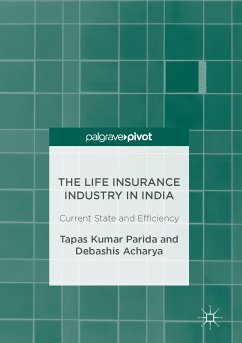Dr Tapas Kumar Parida is an Economist with more than 8 years of work experience in macroeconomic research and planning in banks and research organisations, with diversified academic achievement. Presently, he is working as an Economist at Economic Research Department of State Bank of India (SBI is the biggest commercial bank in India), Corporate Centre, Mumbai. Prior to joining SBI, he has worked with organisations like Indian Bank, Axis Bank Ltd., Planning Commission, New Delhi, Higher Education Department of Government of Odisha and Xavier Institute of Management Bhubaneswar (XIMB). He is a Certified Associate of Indian Institute of Banking and Finance (CAIIB) fromIndian Institute of Banking and Finance (IIBF), Mumbai, India. He has been awarded a PhD in Economics from School of Economics, University of Hyderabad (India). He also holds a Master Degree in Finance and Control (MFC) (which is at par with MBA, Finance) from University of Delhi (India). He writes regularly for a number of magazines and blogs. His publications have appeared in The Global Banker Magazine, Journal of Business Management & Social Sciences Research, Insurance Regulatory and Development Authority India (IRDAI) Journal, the Insurance Institute of India Journal and the Bank Quest.
Dr Debashis Acharya is currently a Professor in the School of Economics, University of Hyderabad, India. He has been teaching undergraduate and postgraduate courses for the past eighteen years. His areas of interest are: monetary economics, macroeconomics, and financial economics. Prior to joining University of Hyderabad he was with the Department of Humanities and Social Sciences, Indian Institute of Technology Madras, Chennai, and Department of Economics, Punjab University, Chandigarh. He has published in the areas of macro-monetary economics and financial economics in national and international refereed journals like International Journal of Emerging Markets, Economic and Political Weekly, Journal of Economic Studies, European Journal of Operational Research, International Research Journal of Finance and Economics, Banks and Bank Systems, South Asia Economic Journal, Global Journal of Emerging Market Economies and Artha Vijanana.
Dieser Download kann aus rechtlichen Gründen nur mit Rechnungsadresse in A, B, BG, CY, CZ, D, DK, EW, E, FIN, F, GR, HR, H, IRL, I, LT, L, LR, M, NL, PL, P, R, S, SLO, SK ausgeliefert werden.









